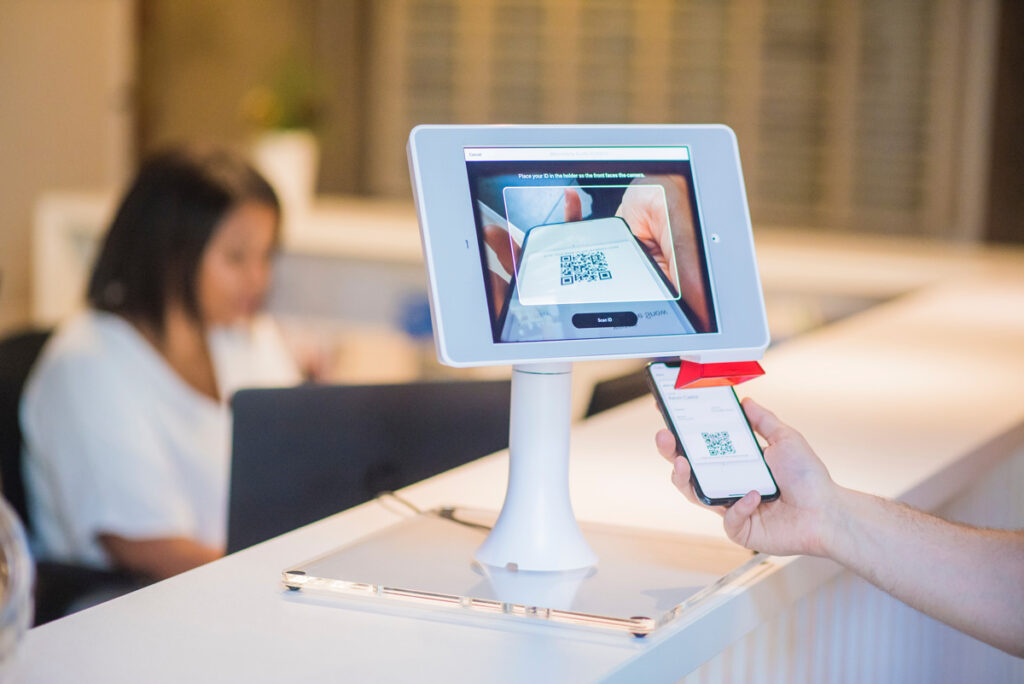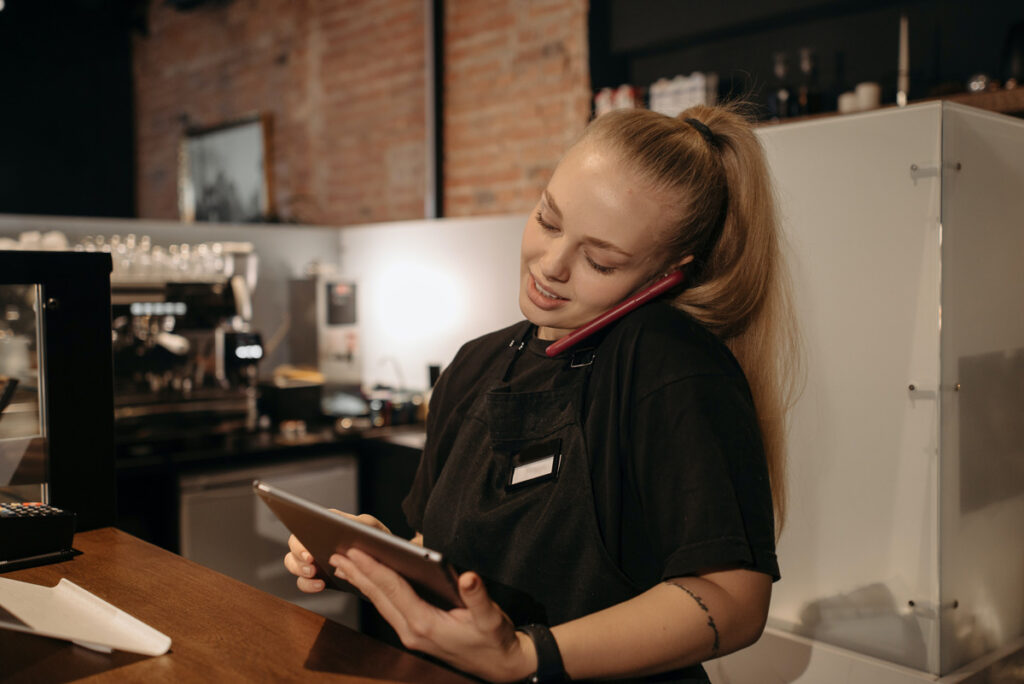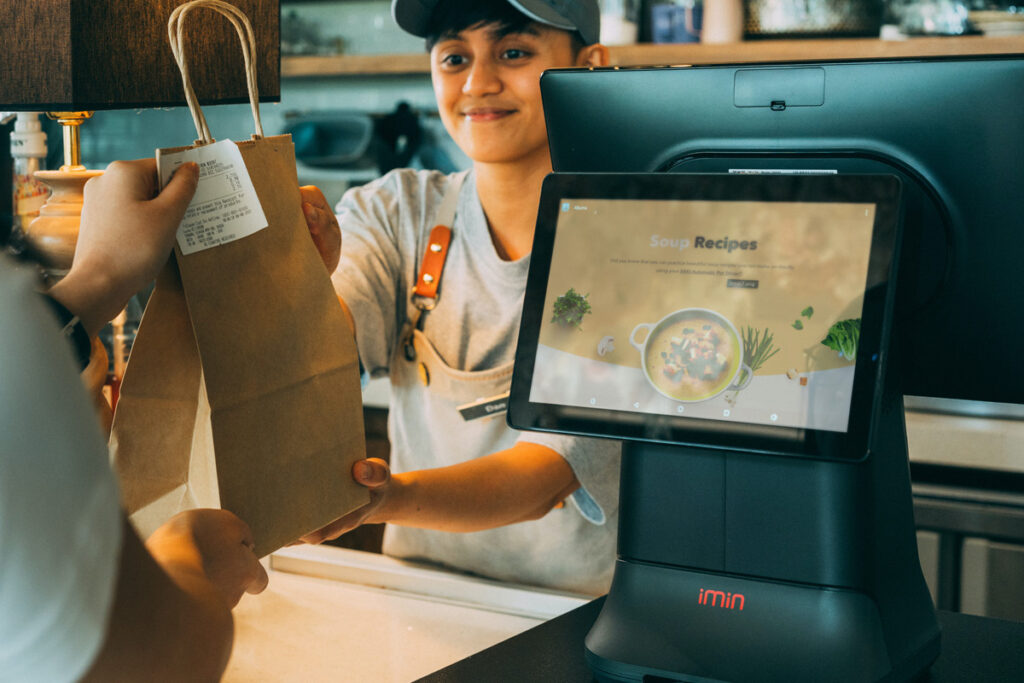The restaurant industry has long provided a personal connection to its customers. But in the face of unprecedented challenges like staffing shortages, inflation, and supply chain issues, it’s time for restaurants to embrace a new way of thinking.
Just as technology has helped—and disrupted—countless other industries, it’s now poised to revolutionize how we dine. And this revolution has already begun. According to the National Restaurant Association’s 2022 State of the Restaurant Industry report, more than 8 in 10 operators said using technology in a restaurant provides a competitive advantage.
That same report found that nearly 66% of operators expected technology and automation to expand in the industry. In the Quick Service Restaurant (QSR) segment, that number jumped to 78% of operators—pointing to the need for a solution to the industry’s ongoing labor shortage.
By embracing technology, restaurants can weather the storm and emerge stronger and more innovative. Here are how restaurants can “think like a tech company” to re-examine employee roles and responsibilities and lean into technology to increase operational efficiency.

Automating the Front of the House
The average restaurant employee’s tenure is just 110 days, according to a recent 7 Shift study. Ongoing staffing challenges have led restaurants to embrace technology solutions, especially in the front of the house where turnover is high.
Automating the front of the house can help restaurants address ongoing staffing challenges, and many are turning to technology solutions that can improve the customer experience while reducing the burden that front-of-the-house employees face.
Self-serve technology, such as a Yelp Kiosk or QR codes, allow customers to check themselves in, view wait times, and receive notifications when their tables are ready—all without requiring the assistance of a staff member.
In fact, ask consumers, and they’ll likely tell you that’s what they prefer as well. According to research from Deloitte, nearly 7 out of 10 diners prefer to order using self-ordering technology. This allows customers to take their time in deciding what they want, rather than having to choose quickly when ordering from a cashier or waitstaff.
This single piece of technology can help free up front-of-the-house staff members so they can focus on other tasks like food running and seating. Hollywood’s Blu Jam Cafe is a great example of how embracing technology can have a big impact on how the restaurant functions.
Blu Jam had already implemented NCR Aloha, a restaurant POS system that provided core capabilities and advanced business intelligence, before the pandemic hit. This allowed them to quickly adapt their business model to comply with stay-at-home orders and maintain sales and revenue. The restaurant also moved to self-service, QR code-based ordering. This move has reduced labor requirements by 8%. Approximately 95% of the restaurant’s pickup orders are also coming directly through its website.
Offering live wait times to customers can be a major advantage for restaurants as well, especially during peak dining hours when wait times can be unpredictable. Customers can make informed decisions about where to eat, and restaurants can better manage their seating capacity and reduce the risk of losing potential customers who may decide to go elsewhere if they think their wait time may be too long. This can ultimately lead to better customer satisfaction and improved revenue for the restaurant.
By leveraging technology solutions like QR codes and self-serve waitlist features, restaurants can improve the customer experience while reducing the burden on front-of-house staff.

Contactless Experiences Continue
One trend that has emerged in the wake of the pandemic is the popularity of contactless experiences, such as curbside pickup, mobile ordering, self-ordering, and kiosks.
By offering these options, restaurants can cater to customers who prefer contactless experiences. Contactless experiences can also streamline operations because they reduce the need for staff interaction and can minimize touchpoints between customers and employees.
In fact, Harvard Business Review research found that customers spend between 12% and 22% more when they order using their eyes and by touch. Using upsell technology, restaurants can suggest adding an item to the customer’s order that complements another item currently on their order.
Of course, to make the most of these technology solutions, restaurants must have a unified system in place to ensure that all staff is on the same page. This process may involve integrating various software platforms to create a seamless experience for staff and customers. By doing so, restaurants can improve their efficiency, reduce errors and ultimately provide a better experience for their customers.

Adopting a Tech Company Mindset
Tech companies recognize the need for an omnichannel strategy that delivers exceptional customer experiences across all touchpoints. Restaurants must do the same—from in-person dining to online ordering, delivery, and even personalized experiences.
Much of this same technology that broke through during the pandemic has offered restaurants the opportunity to increase customer satisfaction levels and upsell revenue. By leveraging technology solutions like integrations with loyalty programs, restaurants can capture consumer data intelligence and execute suggestive selling—driving higher ticket sizes and repeat business. Customers rely heavily on online reviews and social media to find and choose restaurants, making it essential for restaurants to have a strong online presence. This means having a user-friendly website, robust social media profiles, and reliable online ordering and delivery systems.
Another critical factor for restaurants to consider is the potential for digital data to improve the employee experience and optimize inventory management. By leveraging digital tools, restaurants can streamline processes, optimize their inventory and provide employees with the resources they need to do their jobs effectively.
Restaurants that embrace technology and adopt a customer-centric, data-driven approach can stay competitive and thrive in a rapidly changing landscape.

Consumer-Facing Tech & Its Impact on Consumers
An additional trend that is changing the restaurant industry is the replacement of peripheral customer-facing roles with tech tools—and self-ordering technology is just the tip of the iceberg when it comes to the impact consumer-facing technology is making in the restaurant industry.
Loyalty programs and mobile app payments have also become popular. These tools allow customers to earn rewards and pay for their orders through a mobile app, making the ordering and payment process even more convenient. Many fast convenience restaurants, including Chick-fil-A and Starbucks, allow the customer to order, pay and simply pick up the items through the drive-through.
According to the National Restaurant Association’s 2022 State of the Restaurant Industry report, 8 in 10 adults and nearly 90% of millennials and Gen Zers say they would likely join a loyalty program offered at their favorite local restaurant. Nearly 7 out of 10 say they’d be happy using a mobile app to order their restaurant meal.
While technology has the potential to revolutionize the restaurant industry, it is important to note that it cannot completely replace human interaction. Restaurants must strike a balance between technology and human touch to provide the best possible experience for their customers.
While technology can be used to automate repetitive tasks, such as taking orders, human staff can focus on providing personalized service and creating a welcoming atmosphere.
Technology to Stay Competitive
In 2023, the restaurant industry continues to face ongoing challenges related to efficiency, cost, and customer experience. Embracing technology can help address these challenges by improving operations, reducing costs, and enhancing the customer experience.
From self-ordering kiosks to mobile app payments, technology is changing the way restaurants operate and interact with their customers. Restaurants need to embrace these changes and think like tech companies to stay competitive in the rapidly evolving digital landscape. By doing so, they can position themselves for success in the on-demand digital economy’s peak and beyond.





